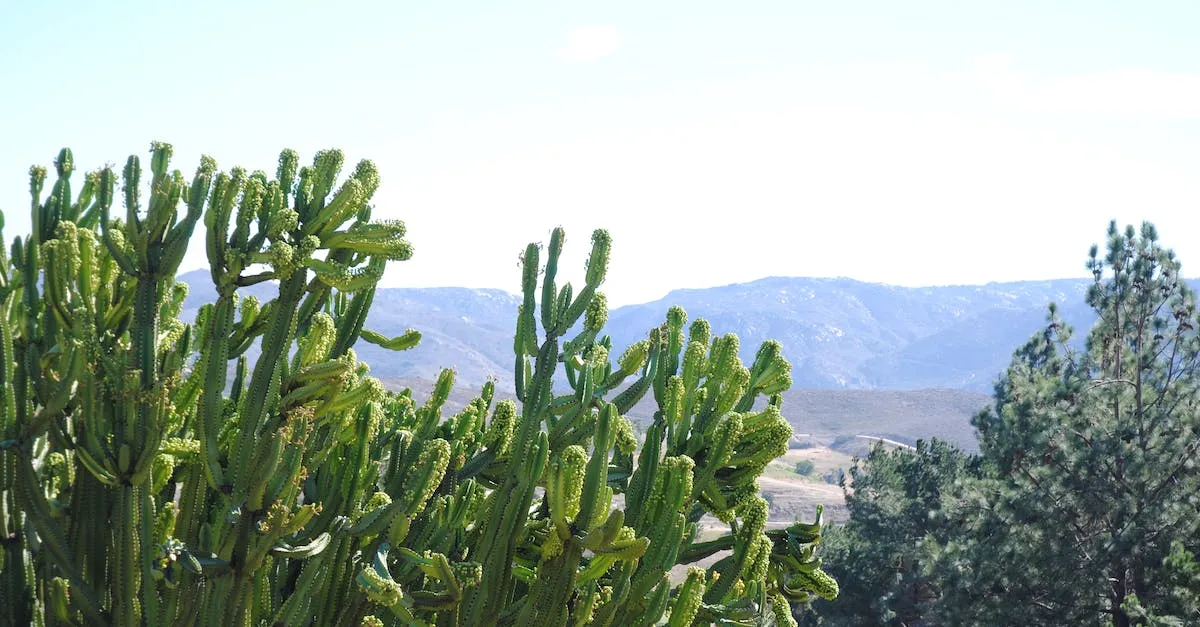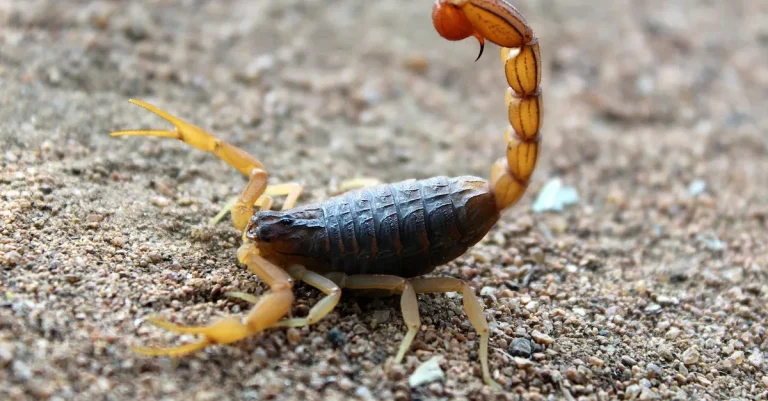Growing San Pedro Cactus In Florida: A Complete Guide
With its sculptural shapes and hallucinogenic properties, the San Pedro cactus holds an allure for many tropical plant lovers. But can this iconic South American species thrive in Florida’s hot, humid climate? While challenging, cultivating these cacti is possible with the right conditions and care.
If you’re short on time, here’s the quick take: San Pedro cactus can grow in Florida if sited in full sun, planted in fast-draining soil, watered sparingly, and protected from excess moisture in winter. Acclimate young plants, provide supports, and wait 3-5 years for flowers and fruit.
San Pedro Cactus Overview
The San Pedro Cactus, scientifically known as Echinopsis pachanoi, is a fast-growing columnar cactus native to the Andes Mountains of Peru and Ecuador. It is also commonly referred to as the “Huachuma” cactus.
This cactus has been cultivated and used by indigenous cultures for centuries for its medicinal and spiritual properties. In recent years, it has gained popularity among cactus enthusiasts and gardeners due to its unique appearance and easy cultivation.
Common Names and Uses
The San Pedro Cactus is known by various common names, including “Giant Cactus,” “Achuma,” and “Gigantón.” These names reflect its impressive size, as it can reach heights of up to 20 feet or more in its natural habitat.
In addition to its ornamental value, this cactus has been used for various purposes throughout history.
One of the most well-known uses of the San Pedro Cactus is its traditional ceremonial use by indigenous shamans. The cactus contains mescaline, a psychoactive compound that induces hallucinogenic effects when consumed.
Shamans use the cactus in spiritual rituals to gain insight, healing, and a deeper connection with nature and the spiritual realm.
Aside from its ceremonial use, the San Pedro Cactus has also been used for its medicinal properties. It is believed to have analgesic, anti-inflammatory, and anti-bacterial properties. Traditional medicine practitioners have used it to treat various ailments such as rheumatism, arthritis, and stomach disorders.
Native Habitat and Growth
The San Pedro Cactus is native to the Andean region of South America, where it thrives in the mountainous areas of Peru and Ecuador. In its natural habitat, it can be found growing at altitudes of up to 3,000 meters (9,800 feet).
This cactus is well-adapted to arid and semi-arid environments, where it receives limited rainfall. It has a high tolerance for drought and can survive in sandy or rocky soils with good drainage. However, it is also capable of growing in more fertile soil conditions.
In terms of growth, the San Pedro Cactus is known for its rapid growth rate. Under ideal conditions, it can grow several inches per year. It typically develops multiple branches, forming a columnar shape with a diameter of up to 6 inches.
The cactus also produces beautiful white flowers that bloom at night and are pollinated by nocturnal insects.
When cultivating the San Pedro Cactus in Florida, it is important to provide it with well-draining soil, adequate sunlight, and protection from frost. The cactus can be grown in containers or directly in the ground.
Regular watering is necessary, but it is essential to avoid overwatering, as excessive moisture can cause root rot.
Growing Conditions
Sun Exposure
To successfully grow San Pedro cactus in Florida, it’s important to provide them with ample sunlight. These cacti thrive in full sun, so choose a location that receives at least six hours of direct sunlight each day. Placing them in a spot with southern exposure is ideal.
If you don’t have a sunny spot in your garden, you can also grow San Pedro cactus indoors near a south-facing window or under grow lights.
Soil
San Pedro cacti prefer well-draining soil that mimics their natural habitat. A mix of sandy soil and pumice or perlite works well for these plants. This type of soil allows excess water to drain away quickly, preventing the roots from sitting in soggy conditions.
If you’re unsure about the quality of your soil, you can add some sand or perlite to improve drainage.
Watering Needs
When it comes to watering San Pedro cactus, it’s important to strike the right balance. These plants are native to arid regions and are adapted to periods of drought. Overwatering can lead to root rot and other issues. Allow the soil to dry out completely between watering sessions.
During the warmer months, you may need to water your San Pedro cactus every two to three weeks. In the cooler months, reduce watering frequency to once a month.
Temperature and Humidity
San Pedro cacti are native to regions with warm temperatures and low humidity. In Florida, they can tolerate the state’s hot and humid climate, but they may require some protection from intense afternoon sun.
If growing them indoors, ensure the room temperature remains between 70 to 90°F (21 to 32°C). Keeping the humidity levels between 40% to 60% is ideal. Using a humidifier or placing a tray of water near the cactus can help maintain the desired humidity levels.
To learn more about growing San Pedro cactus in Florida, you can visit Florida Museum for additional information and resources.
Planting and Care
When it comes to growing San Pedro cactus in Florida, proper planting and care are essential for the plant’s health and growth. Here are some key steps to follow:
Starting from Seed
The first step in growing San Pedro cactus is to start with seeds. You can purchase seeds from reputable suppliers or collect them from mature plants. To increase germination rates, it is recommended to scarify the seeds by lightly sanding or scratching the outer coating.
Plant the seeds in well-draining soil and keep them moist but not waterlogged. Place the pot in a warm and sunny spot, and within a few weeks, you should see seedlings emerging.
Acclimating Young Plants
Once the San Pedro cactus seedlings have grown a few inches tall, it’s time to acclimate them to the outdoor environment. Start by gradually exposing them to more sunlight each day over a period of one to two weeks. This process helps the plants adjust to the intensity of the sun in Florida.
Additionally, it is important to protect the young plants from extreme temperatures and strong winds during this period.
Providing Support
As San Pedro cacti grow, they develop a woody trunk that may need support to prevent bending or breaking. Using stakes or bamboo poles, gently tie the cactus to provide support as it grows. Be careful not to tie it too tightly, as this can damage the plant.
Regularly check the ties and adjust them as necessary to ensure the cactus is well-supported.
Fertilizer
San Pedro cacti are relatively low-maintenance plants when it comes to fertilization. However, providing them with a balanced cactus fertilizer during the growing season can help promote healthy growth.
Follow the instructions on the fertilizer packaging for the correct amounts and frequency of application. Remember to water the plant before applying fertilizer to prevent root burn.
Pruning
Pruning San Pedro cactus is not necessary for its growth, but it can help maintain a desired shape and size. Use a clean, sharp knife or pruning shears to remove any dead or damaged stems. Be cautious when pruning, as the cactus has spines that can cause injury.
It is also important to wear protective gloves and eyewear. After pruning, allow the cuts to dry and callus before placing the cactus back in its growing spot.
By following these planting and care guidelines, you can successfully grow San Pedro cactus in Florida and enjoy its unique beauty and features.
Pests, Diseases, and Problems
Common Threats
When growing San Pedro cactus in Florida, it is important to be aware of common pests and diseases that can affect its health. One of the most common threats is mealybugs, which are small, white insects that feed on the sap of the cactus.
These pests can cause damage to the plant by sucking out its juices and leaving behind a sticky residue. Another common threat is scale insects, which are small, oval-shaped bugs that attach themselves to the cactus and feed on its tissues.
They can be difficult to spot, but can cause significant damage if not treated promptly.
Other pests that can pose a threat to San Pedro cactus include spider mites, aphids, and snails. Spider mites are tiny arachnids that can be difficult to see with the naked eye, but they can cause yellowing leaves and webbing on the plant.
Aphids are small insects that feed on the sap of the cactus and can cause wilting and deformation of the plant. Snails, on the other hand, can chew on the cactus and leave behind holes and damage to the stem.
Avoiding Rot and Decay
One of the biggest challenges when growing San Pedro cactus in Florida is avoiding rot and decay. The high humidity and frequent rain showers in the state can create the perfect environment for fungal and bacterial diseases to thrive.
To prevent rot and decay, it is important to ensure that the cactus is planted in well-draining soil and that excess water is able to drain away from the roots. Overwatering is one of the main causes of rot, so it is crucial to water the cactus sparingly and only when the soil is dry.
In addition to proper watering, it is also important to provide good air circulation around the cactus. This can be achieved by spacing the plants apart and avoiding overcrowding. Regularly inspecting the cactus for any signs of rot or decay, such as soft and discolored areas, can also help catch and address any issues early on.
Troubleshooting Issues
Despite your best efforts, you may still encounter some issues when growing San Pedro cactus in Florida. One common problem is sunburn, especially during the hot summer months. To prevent sunburn, it is advisable to provide some shade for the cactus, especially during the peak hours of sunlight.
This can be done by using shade cloth or placing the cactus in a location where it receives partial shade.
Another common issue is nutrient deficiency, which can cause stunted growth and yellowing of the cactus. To address this problem, it is important to provide the cactus with a balanced fertilizer specifically formulated for cacti and succulents.
Following the instructions on the fertilizer package and fertilizing the cactus regularly can help promote healthy growth.
If you notice any other issues with your San Pedro cactus, such as discoloration, wilting, or unusual growth patterns, it is recommended to consult a plant expert or refer to reputable gardening resources for further guidance.
These resources can provide specific advice and solutions based on the particular problem you are facing.
Conclusion
While growing San Pedro cactus in Florida presents some challenges, those willing to provide the right sun, soil, water and care will find these plants can add exotic structure and interest to any tropical garden. With a little patience and the proper conditions, Florida gardeners can enjoy the unique beauty of this iconic cactus right at home.








